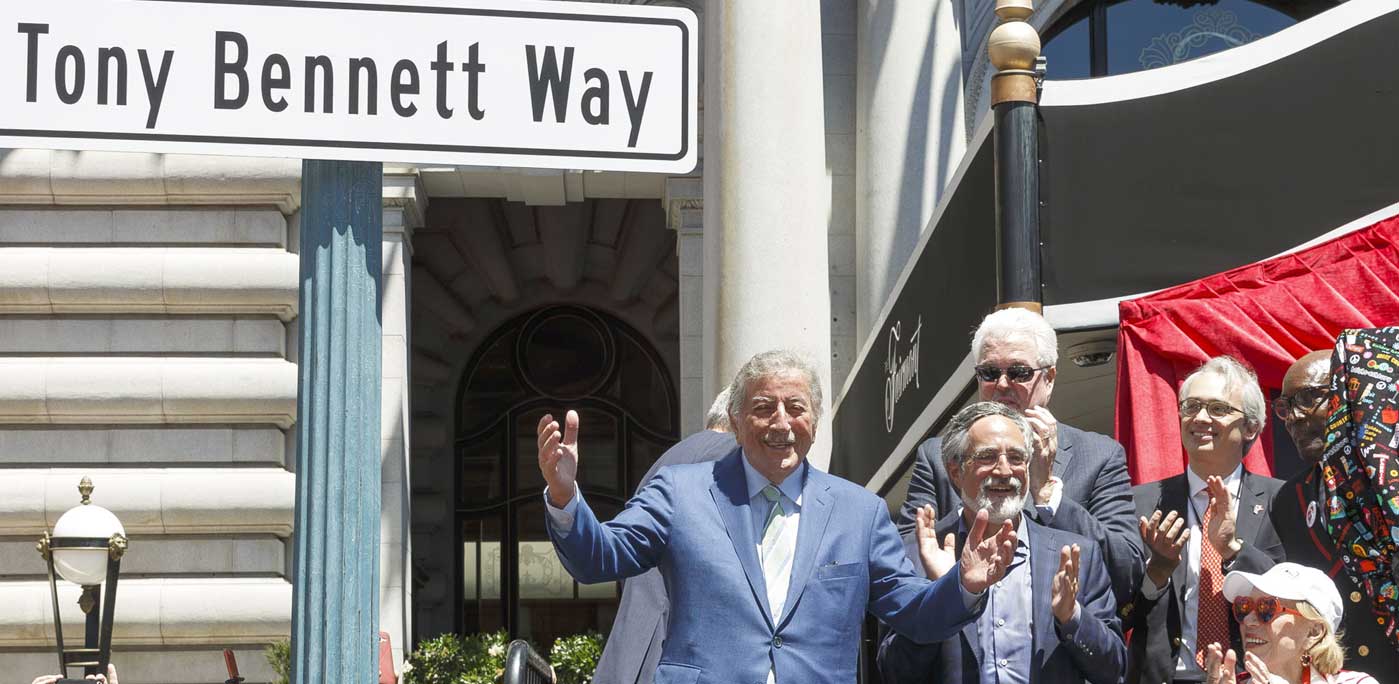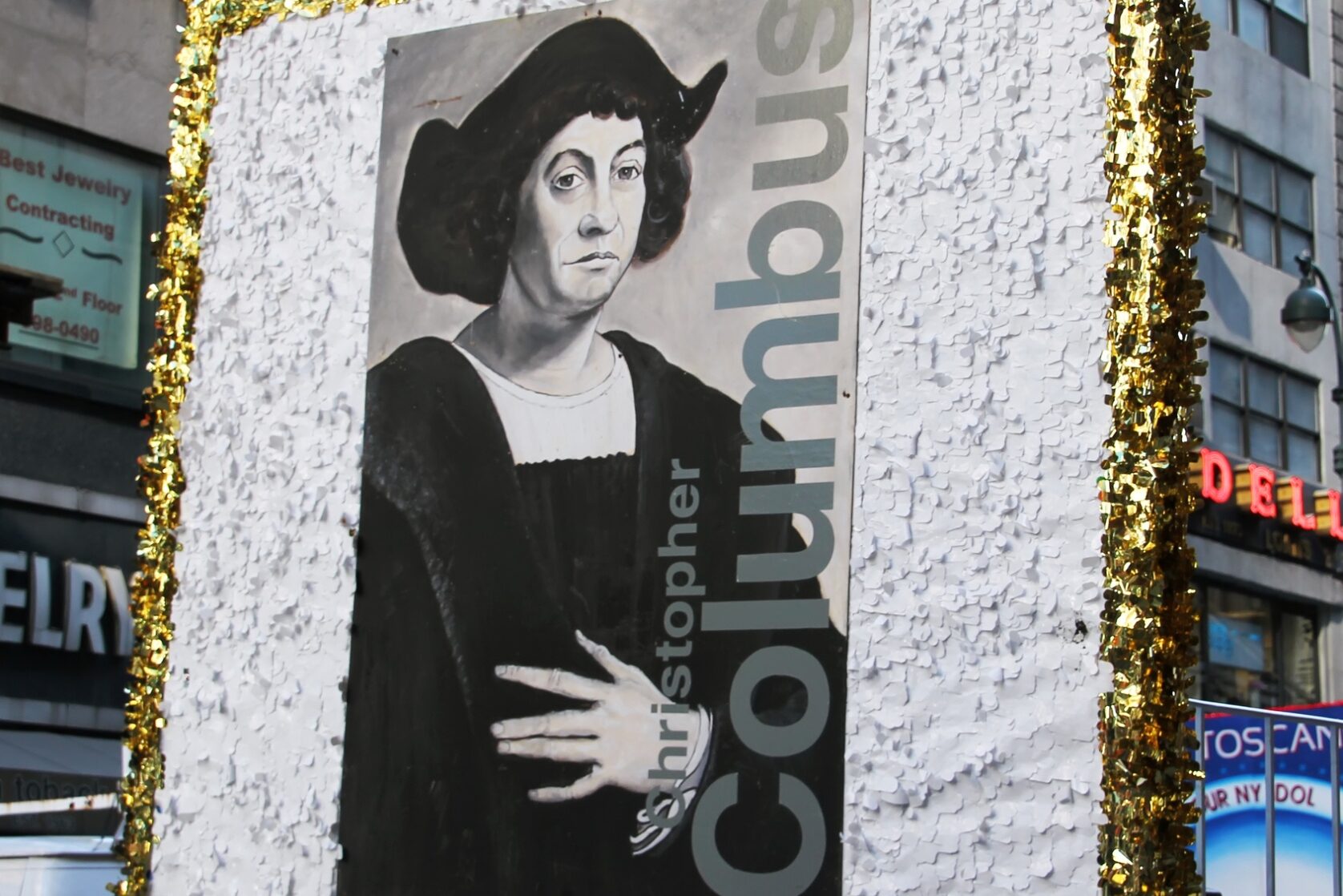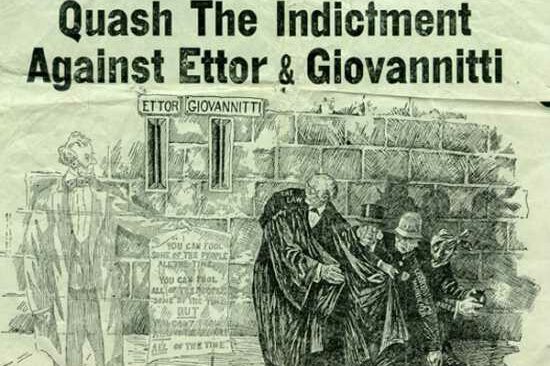Birthday “numero 88” was celebrated by singer Tony Bennett of “I Left My Heart in San Francisco” fame in North Beach recently. The following day he had a “very public lunch” at another S.F. Restaurant.
According to S.F. Chronicle columnist, Willie Brown, who was there, “Tony was his usual gracious self to the steady stream of fans who came up to his table for a word and a photo. No wonder the guy never puts on weight. With all the interruptions, he doesn’t get a chance to eat”. Antonio Dominick Benedetto, son of a New York tailor and homemaker mother, Anna, has “roots” in the Calabria region of Italy.
Tony was born in Astoria, New York. The boy from Astoria, born August 3, 1926, made it the hard way. In his teens he picked up $15 for weekend engagements singing in local nightclubs. During World War II he served for almost three years as a front-line infantryman in Germany. On his return he enrolled in the American Theatre Wing for professional training. During this time he appeared on Arthur Godfrey’s Talent Scouts, losing to vocalist Rosemary Clooney.
Some months later, while auditioning at the Greenwich Village Inn, he was heard by Pearl Bailey, who insisted that he be hired. Bob Hope saw him, took him on tour in 1949 and suggested he shorten his name. Tony’s early smash hits include Cold, Cold Heart, Rags to Riches, Strangers in Paradise, Because of You, Boulevard of Broken Dreams and I won’t Cry Anymore.
***
Counts with no Accounts have long been a favored import of wealthy American heiresses. Today, because of the Italian connection, I will recall Count and Countess Dandini “numero uno and due”. Countess Lillian Remillard Dandini was born in Oakland, California in 1880. Her parents, Pierre and Cordula Remillard were rich and friends with many of the politically connected Oakland families of the day. As a young teen Lillian tutored family friend Jack London in French.
By March 1901, Lillian was living in New York, training for a career as an opera singer, when she learned her only brother Philip had fatally fallen from a San Francisco restaurant fire escape. Upon her father’s death in 1904, Lillian returned to Oakland in order to assist her mother. The two assumed ownership of the family business, the Remillard Brick Company.
On August 23, 1932, Lillian shocked society friends when she tied the knot with poor nobleman, 20 years her junior, with the impressive title of Conte Alessandro Dandini di Cesena, who Lillian called “Alex”.
Unfortunately the marriage did not last. The count and countess Dandini were granted a divorce in 1939, due in part to the fact that the count was embezzling from her family business, the Remillard Brick Company. The countess might have overlooked the count’s unauthorized hand in the family business till, were it not also for the count’s “wandering eye” and other body parts. Lillian, who never remarried, retained the title Countess Lillian Remillard Dandini for the rest of her life. Following her death in 1973, her ex-husband, who had remarried, sued to inherit her estate, but lost the legal battle.
Lillian was extremely generous, donating funds for the creation of many community enrichment projects, including the Opera League of Oakland.
In 1953 Lillian saved the former home of Harriet Pullman Carolan from being demolished. She lived in Chateau Carolands in Hillsborough, California, until her death in 1973.
Countess Angela Dandini (contessa numero due) who died in 2004 in Nevada at age 88, wanted the world to know that her husband Count Alessandro Dandini was a lot more that just a handsome face and held several patents. After the count’s passing in 1991, his widow, Angela Dandini penned this profile “A True Renaissance Man” for the 1996 summer edition of La Rivista Della California, the magazine of the “Fondazione Amici dell’Italia” (A.D.I.F.) San Francisco.
“My late husband, Alessandro Dandini di Cesena, was perhaps best known outside of his adopted home town of Reno, Nevada, for his invention of the three-way light bulk. After General Electric developed his invention, it became a standard in homes to this day. In Reno, were he moved in 1945, “Sandro” was regarded as a rare example of that much-misused phrased ‘Renaissance Man’. His bearing, character, achievements and generosity were manifest in his distinguished roles as an engineering and linguistic professor, a host to diplomats, an inventor, philanthropist, community pillar of refinement and loving and devoted husband.
Sandro was born June 19, 1899 in Mexico City. He was 15 when World War I broke out and was enrolled in a military academy in Rome. He volunteered and served in the French and Italian armies, was wounded, and hospitalized for many months. After the war, he resumed his studies at the Accademia Consiglio Vittorio Veneto.
He went on to earn a doctorate in science from the University of Grenoble in 1921, and added a doctorate in hydraulic engineering from the University of Turin.
Sandro served in the Italian diplomatic corps until 1926. Mussolini’s dictatorship had tightened its grip, and when Sandro refused to pledge his allegiance to Il Duce– the count was, after all, a monarchist- he was forced into exile. Sandro went to work as a hydraulic engineer in Mexico. In 1929, he patented the three-filament lamp, or three-way light bulb. He also tackled the idea of building a better brick. He came up with a white-painted brick with a triangular design that would shadow part of the sun throughout the day and thus cut down on glare. Sandro moved to California during World War II. He developed inventions for the armed forces, including designs and improvements for an anti-submarine vessel and a vessel for transporting troops from water to land. When an acquaintance mentioned that the University of Nevada, Reno needed a professor to teach Latin, Sandro offered to temporarily help. Before long, he became a permanent part of the university community, a professor who presented a cosmopolitan image to his students, striding in formal attire across campus with erect bearing and caring abastone (cane).
He patented a solar energy design in 1975, based on a glass sphere within a sphere. Lenses on the outside were to concentrate the sun’s rays like a prism to the inner sphere, which was fitted with a photovoltaic cell to turn intense heat into electricity. He also designed a gyroscopic vessel for the U.S. Navy. It resembled a globe rolling across water. Sandro ultimately accumulated 22 patented inventions, including a helicopter, a retractable automobile top, an open fireplace and a keno gambling game. There must have been something of the spark of Da Vinci in my husband.”
Sandro succumbed to pneumonia November 1991.
***






























